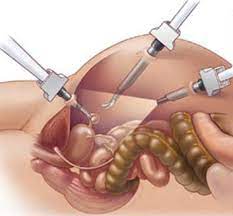All You Must Know About Laparoscopy before Undergoing It
Pelvic laparoscopy is a surgical process that involves apparatus named laparoscope. A specialist inserts this apparatus through a small incision inside the abdomen. The medical team uses it in the laparoscopy center in Bilaspur for diagnosing disorder and disease of the uterus, urinary bladder, and pelvis.
The small incisions are 0.5” long. As a result, laparoscopy avoids the call for the open surgery process. Specialists usually refer to it as a keyhole or minimally invasive surgery.
A doctor performs the process while the patient is under anaesthesia. Usually, people fall asleep when undergoing it. On the other hand, the regional anaesthetic can be used when appropriate.
Laparoscopy can be used in several treatments like abdominal hernia repairs and taking away the appendix. This post primarily focuses on the gynaecological use of pelvic laparoscopy.
What is laparoscopy?
It’s a diagnostic process and the surgeon uses the tiny tool with attached camera and light to visualize organ disease and damage. During this process, the doctor insert laparoscope inside the abdomen via a small incision. They will use a catheter allowing for clearer imaging of the organs into the pelvis and abdomen.
Surgeons at times may support laparoscopy with extra surgical tools that they can insert via incision sites. A person undergoing it can expect 4 small incisions.
A medical expert performing it may use a uterine manipulator which is put into the vagina, uterus, and cervix to let pelvic organ movement to see the differing pelvic structures.
Once done with the process, the surgeon will remove CO2 from the abdomen and will also take away all the instruments, close the opening with the stitches and cover the area with small bandages.
Following the process at the laparoscopy center in Bilaspur, an individual may feel nauseous and tired due to anaesthesia.
The people are discharged from the day of surgery but for some hospitalization can be essential if not able to recover fast and fully.
Reasons for undergoing it-
1- Diagnosis and treatment of endometriosis, pelvic pain, cause of infertility
2- Evaluating cancer including uterus, cervix, and ovary
3- Removal of the uterus, lymph nodes, ovarian cysts
4- Treatment of disorders like pelvic organ prolapsed, urinary incontinence
Advantages
Working this way is having many benefits in comparison to traditional surgery. Following are the benefits-
· Less pain
· Soon recovery
· Low infection risks
· Small incisions
Are there any risks?
The risk of laparoscopy includes-
1- Hernia
2- Adverse reaction to anaesthesia
3- Bleeding
4- Blood clots
That’s all you should be informed about before heading to any laparoscopy center in Bilaspur.



Comments
Post a Comment